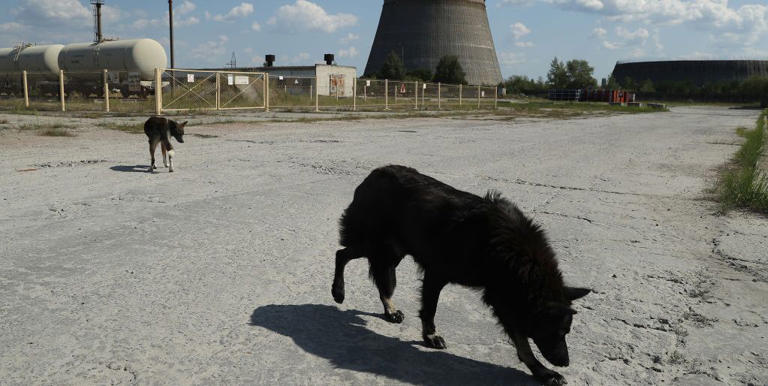
It was on April 26, 1986, when the Chernobyl Nuclear Reactor in northern Ukraine experienced a catastrophic explosion, releasing a devastating cloud of radiation into the atmosphere. Almost forty years later, the Chernobyl Power Plant and its surrounding areas remain abandoned by human habitation.
In the absence of humans, a diverse array of animals has thrived. Among the radiation-resistant fauna, thousands of feral dogs roam the region, many of them descendants of pets left behind during the hurried evacuation that occurred decades ago. As the anniversary of the world’s most significant nuclear disaster approaches, biologists are now delving into the animals residing within the Chernobyl Exclusion Zone (CEZ), an area equivalent in size to Yosemite National Park. Their aim is to understand how years of radiation exposure may have influenced the animals’ genomes and potentially accelerated the process of evolution.
Scientists from the University of South Carolina and the National Human Genome Research Institute have initiated an investigation into the DNA of 302 feral dogs found within or near the CEZ. Their objective is to gain insight into how radiation might have impacted their genetic makeup. The results of their study were recently published in the journal Science Advances.
Co-author Elaine Ostrander, a dog genomics expert at the National Human Genome Research Institute, explains their focus: “Do these dogs possess mutations that enable them to live and reproduce successfully in this region? What challenges do they face, and how have they adapted genetically?”
The concept of radiation expediting natural evolution is not entirely novel. Intentionally subjecting seeds to radiation in outer space to induce favorable mutations, for instance, has become a recognized method for cultivating crops that are better suited to a changing climate.
Scientists have been analyzing various animals residing within the CEZ for years, including bacteria, rodents, and birds. In a study conducted in 2016, researchers discovered that Eastern tree frogs (Hyla orientalis), which are typically green, displayed a higher prevalence of black individuals within the CEZ. The biologists postulated that these frogs had undergone a beneficial mutation in their melanin, the pigment responsible for skin color, which provided protection against the surrounding radiation.
This finding prompted scientists to question whether a similar phenomenon was occurring among the wild dogs of Chernobyl.
The recent study revealed distinct genetic differences in the feral dogs residing near the Chernobyl Power Plant compared to dogs living just ten miles away in the nearby city of Chernobyl. While this observation suggests that these dogs may have undergone rapid mutation or evolution due to radiation exposure, it is essential to note that this study represents just the initial stage in substantiating this hypothesis. Unraveling the effects of radiation-induced mutations from other factors, such as inbreeding, poses significant challenges, as noted by an environmental scientist in Science News.
Nonetheless, this study serves as a blueprint for further investigations into the impact of radiation on larger mammals. By comparing the DNA of dogs inhabiting the Chernobyl Power Plant and Chernobyl City to dogs in non-irradiated regions, researchers hope to gain a deeper understanding of the effects of radiation exposure. Although concrete conclusions are currently lacking, this study reinforces the notion that an area that should have been a desolate wasteland has instead become an unparalleled scientific opportunity to explore the intricacies of radiation and its influence on natural evolution.


